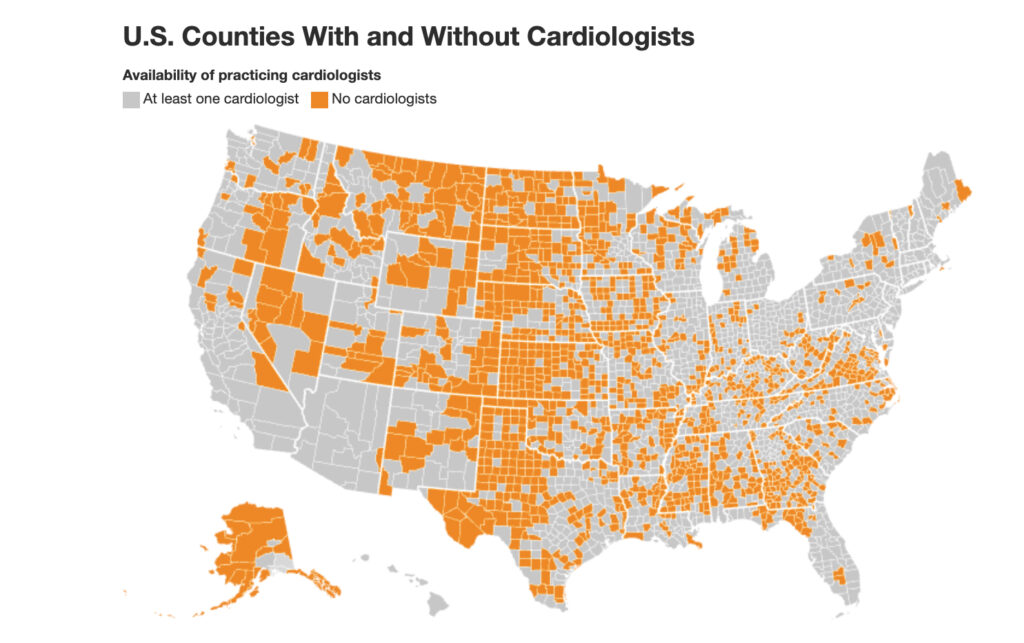
What You Should Know:
– Heart disease remains a leading cause of death in the United States, claiming over 700,000 lives in 2022 alone. While cardiologists play a crucial role in diagnosing and treating cardiovascular conditions, a new study reveals a shocking disparity in access to these specialists across the country.
– A collaborative study between GoodRx Research and Harvard Medical School researchers reveals that a staggering 46% of U.S. counties, home to 22 million residents, lack a single practicing cardiologist. This data, published in the Journal of the American College of Cardiology, paints a concerning picture of “cardiologist deserts” – areas with a critical shortage of heart specialists.
The Southern US Faces a Double Threat
The study highlights a troubling geographical trend. Many of these cardiologist deserts are concentrated in the Southern United States, a region already reported to have lower rates of ideal heart health. This lack of access compounds existing risks, as these counties often have higher rates of cardiovascular disease risk factors like obesity, diabetes, and smoking.
The data paints a bleak picture:
- Counties without cardiologists have higher rates of at least one cardiovascular disease risk factor.
- Southern cardiologist deserts face an even greater risk due to multiple risk factors.
- These areas also experience higher cardiovascular-related death rates.
Cardiovascular Deaths and Lower Life Expectancy
The study identified counties in Louisiana, Mississippi, and Oklahoma with the highest cardiovascular death rates, all lacking practicing cardiologists. This translates to a statistically significant difference in age-adjusted cardiovascular mortality rates – higher in counties without cardiologists compared to those with cardiologists.
Furthermore, these areas tend to have lower median household income and higher rates of uninsured individuals, further limiting access to potentially lifesaving heart care.
The Urgent Need for Change
The findings underscore a pressing need to improve access to cardiologists, particularly in vulnerable areas like the Southern US. Addressing this disparity requires a multi-pronged approach:
- Incentivize specialists: Financial incentives and loan repayment programs could encourage cardiologists to practice in underserved areas.
- Telemedicine expansion: Telehealth consultations with cardiologists could bridge geographical gaps and provide preliminary care.
- Increased training: Encouraging more medical students to specialize in cardiology could help address the overall shortage.

